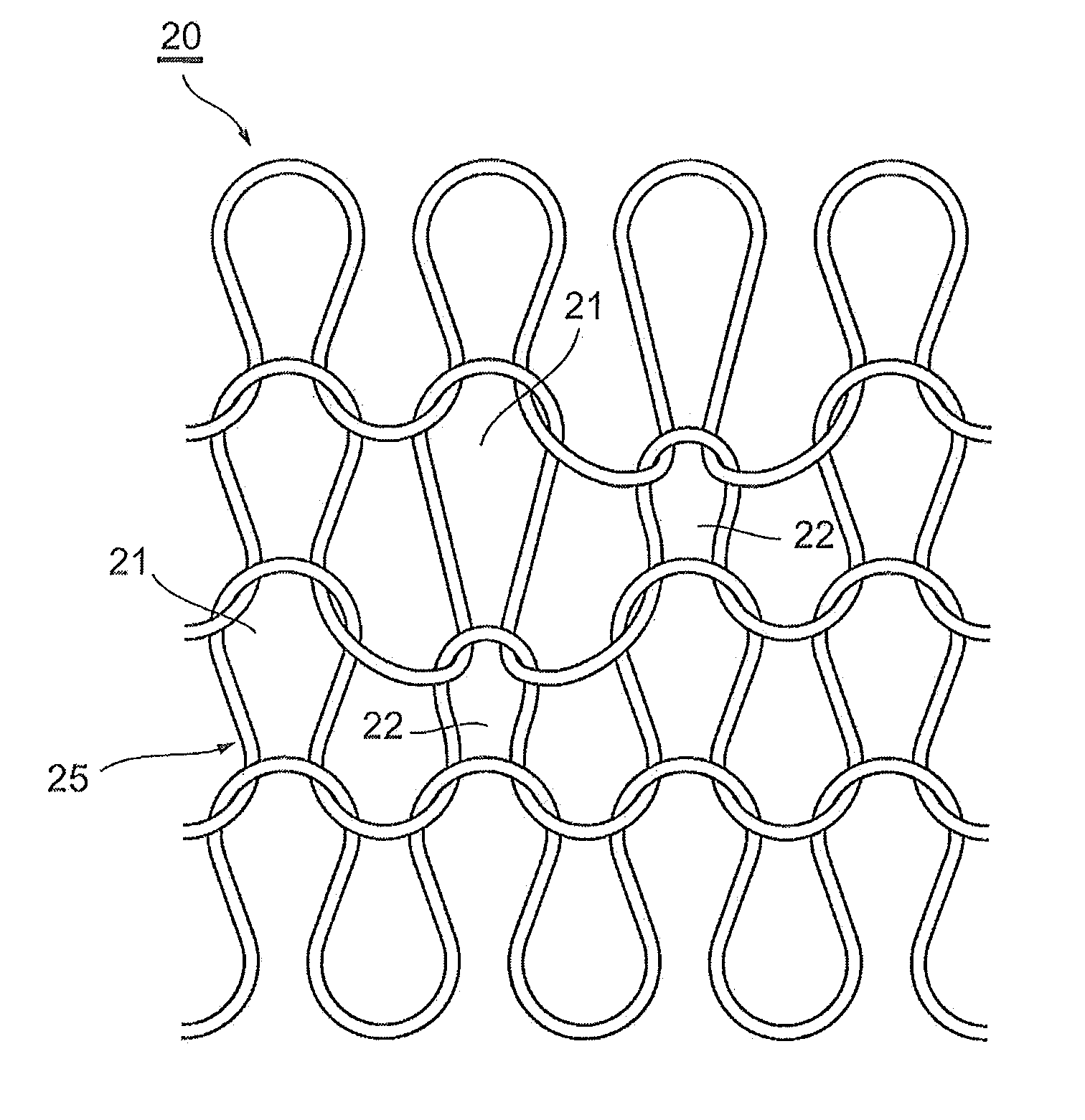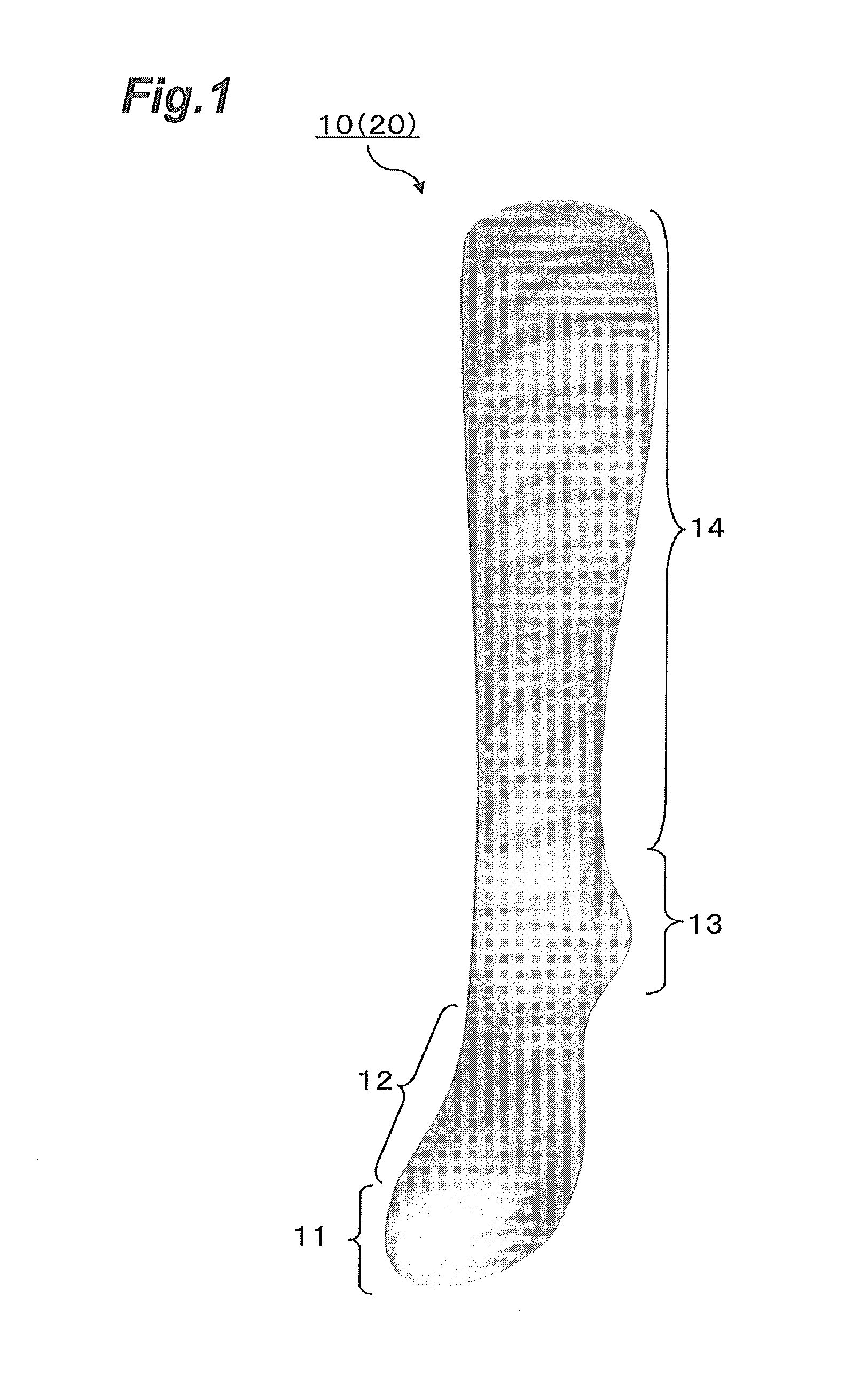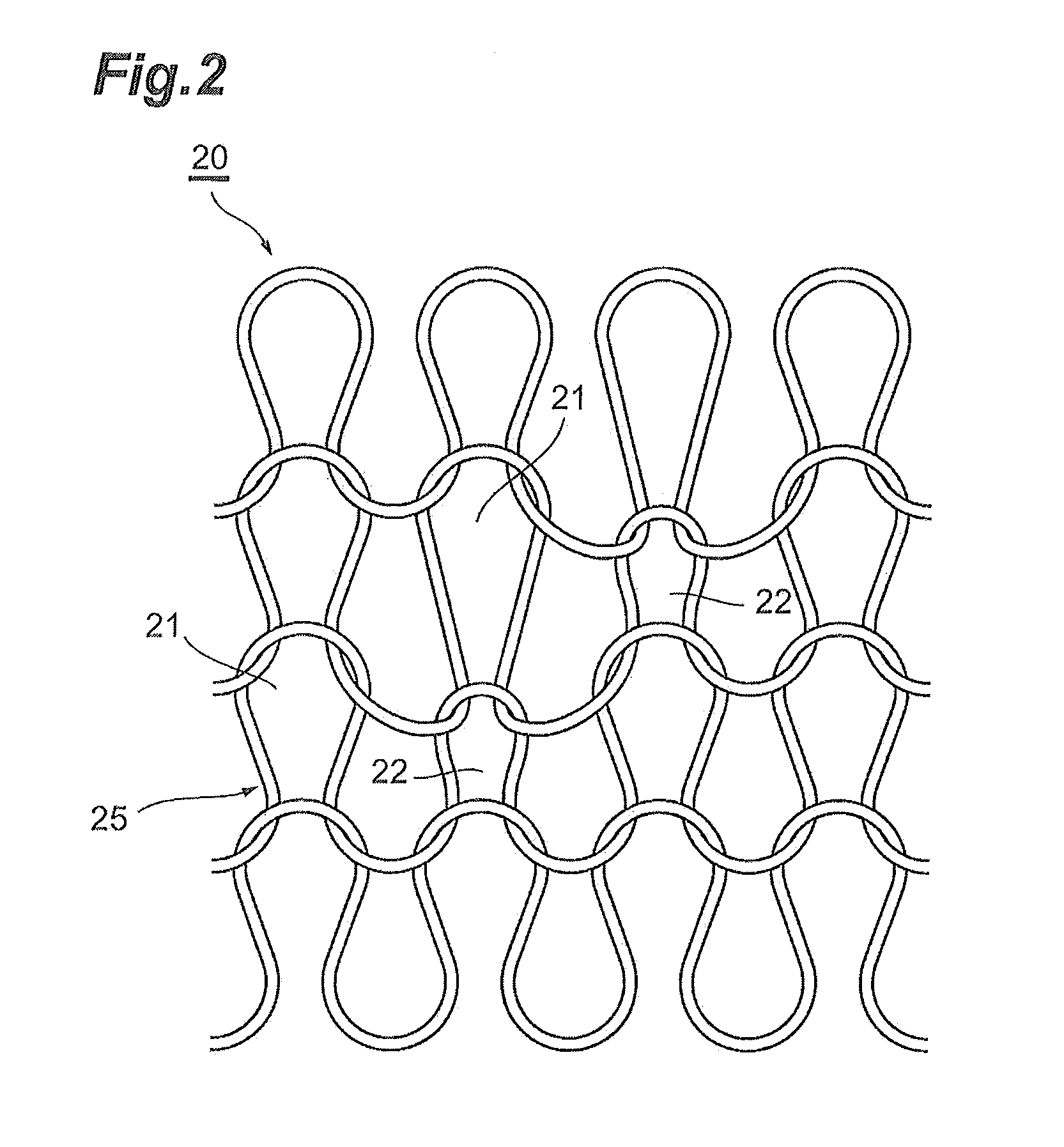Tubular knitted fabric for clothing and legwear
a technology of knitted fabric and clothing, which is applied in the direction of weft knitting, textiles and papermaking, knitting, etc., can solve the problems of reducing production efficiency, reducing the conservation of natural resources, and waste of raw materials at the cut end, so as to increase the level of fashionability, high fashionability, and the effect of high fashion
- Summary
- Abstract
- Description
- Claims
- Application Information
AI Technical Summary
Benefits of technology
Problems solved by technology
Method used
Image
Examples
example 1
[0051]Specifications of a tubular knitted fabric for clothing according to Example 1 are explained.
[0052]Face yarn: Woolly nylon, 60 deniers (30 / 2)
[0053]Back yarn: SCY 15 / 7-5F produced
[0054]In this tubular fabric according to Example 1, a first stitch part with a great stitch density configures a translucent fabric, and a second stitch part having a stitch density smaller than that of the first stitch part configures a non-translucent pattern. Note that the term “a first stitch part” represents a region in which the first stitches are formed, and the term “a second stitch part” represents a region in which the second stitches are formed.
[0055]This sock according to Example 1 represents a pattern continuously formed astride a region knitted by the reciprocal rotation of the cylinder (the heel part, the toe part) and a region adjacent thereto (knitted by the positive rotation of the cylinder).
[0056]The pattern represented by the tubular knitted fabric for clothing according to the emb...
example 2
[0058]Specifications of a tubular knitted fabric for clothing according to Example 2 are explained.
[0059]Face yarn: Lame yarn, equivalent to 40 deniers, purple
[0060]Back yarn: SCY 15 / 7-5F produced
[0061]In this sock according to Example 2, the first stitch part with a great stitch density configures a translucent fabric, and the second stitch part having a stitch density smaller than that of the first stitch part forms shading of the lame yarn as a pattern. When a lame yarn is used in a fabric to form a pattern by means of a conventional technology, a cut end of the yarn becomes exposed on the inside of the fabric, providing an extremely uncomfortable tingling sensation at a film part. However, use of the technology of the present invention can produce a pattern without cutting the lame yarn, eliminating such uncomfortable sensation.
example 3
[0062]Specifications of a tubular knitted fabric for clothing according to Example 3 are explained.
[0063]Face yarn: Woolly nylon, 60 deniers (30 / 2), yellow
[0064]Back yarn: DCY 20 / 12×12, black
[0065]In this sock according to Example 3, yarns of different colors are used as the face yarn and the back yarn to represent the face yarn (yellow) in the first stitch part having a great stitch density and the back yarn (black) in the second stitch part having a small stitch density. As a result, a pattern with new texture can be realized, putting an emphasis on the pattern.
PUM
 Login to View More
Login to View More Abstract
Description
Claims
Application Information
 Login to View More
Login to View More - R&D
- Intellectual Property
- Life Sciences
- Materials
- Tech Scout
- Unparalleled Data Quality
- Higher Quality Content
- 60% Fewer Hallucinations
Browse by: Latest US Patents, China's latest patents, Technical Efficacy Thesaurus, Application Domain, Technology Topic, Popular Technical Reports.
© 2025 PatSnap. All rights reserved.Legal|Privacy policy|Modern Slavery Act Transparency Statement|Sitemap|About US| Contact US: help@patsnap.com



